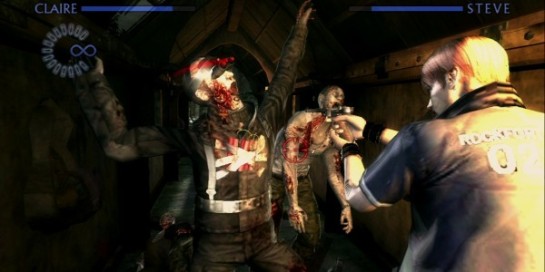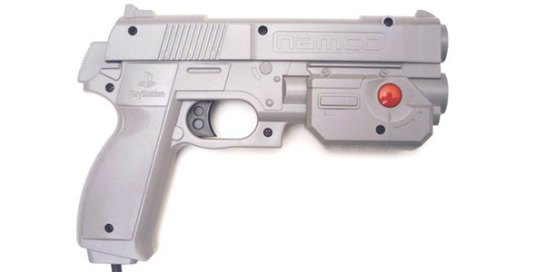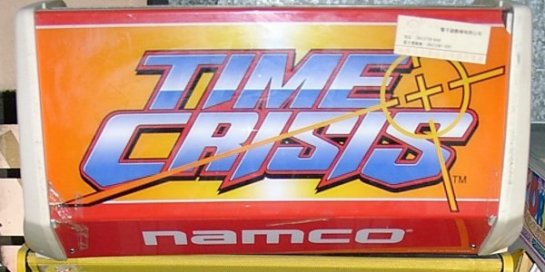Genre Theory 101: Light Gun Shooters
There’s something satisfying about playing a first-person shooter – the feeling of pumping opponents full of lead while defying death and standing against the odds can be exhilarating if done correctly. First-person shooters, however, tend to be confined to your normal input devices like a gamepad or a mouse and keyboard. This is where light gun shooters come in – they change things up by using an assortment of replica firearms as their control method. Unfortunately, light gun shooters are mostly left for dust-covered ghost town arcades or as an occasional adult release amongst a swarm of kid and family friendly titles for popular motion control methods these days.
Basically, do you like shooting people in the face in first-person shooters? How about playing a game where you actually use a freaking gun?
Defintion
The most obvious thing about light gun shooters is their use of the ‘light gun’ – a controller shaped like a firearm which players use by pointing at a screen and firing as if it were a real gun. These light guns come attached to arcade cabinets in the arcades, and come as peripherals which are purchased separately for the console market. Recently, motion based controllers like the PlayStation Move and Wii Remote have also served the same function as light guns.
Light gun shooters are, by their nature, on-rails experiences. While they offer the feeling and accuracy of using a gun over first-person shooters, they don’t, usually, also offer the freedom of movement that FPS’ do. Since their controllers are controllers shaped like guns and not standard controllers, there’s no room for any movement controls. Players are taken through different screens and must shoot all on-screen enemies without dying, and sometimes before a time limit expires.
Genre Conventions
Light gun shooters are arcade games – they originate from, and are best experienced, in the environment of the arcade. Although some titles make it to the home market, many are sadly only make it to the arcade, so are left unplayed by many people who don’t have arcades nearby or just simply don’t go to the arcade anymore.
Production values are often cheap and cheesy, as many games are low-budget affairs aimed to get to the arcade market quickly and chew up people’s loose change. This low budget feel, however, isn’t a bad thing – much like bad films, light gun shooters can be incredibly entertaining based on their B-Movie aesthetics and feel. Confusing storylines and immensely poor voice acting are common sights in light gun shooters – ‘The House of the Dead’ series (Sega, 1996-onwards) is particularly famous for this. Of course, not all light gun shooters come with shoddy voice acting and B-Movie qualities – the pictured game above, ‘Dead Space: Extraction’ (Visceral Games/EA, 2009) is an excellent example of a story-driven light gun shooter with top notch voice acting and production values.
Other than that, the genre conventions for light gun shooters are pretty simple – you aim a gun at the screen, and are moved through a level on-rails, screen by screen, as you attempt to rank up combo points by hitting enemies without missing and not getting hit. You usually have a life gauge or a certain amount of hits it takes for your character to die, and if you die you have to use a continue; run out of continues, and the game is over. If you’re playing in the arcade, you can just put in more money for further continues, and if you’re playing at home then it looks like you’re starting again.
End-of-level boss fights are common. These bosses tend to follow easily noticeable attack patterns, making them easy to predict. They also nearly always have a weak spot which is either the only place they take damage, or an area where they take much more damage than usual. Some games will point these weak spots out before or during the boss fight, while others just leave it up to you to figure out. Shooting a boss character in the right spot just before they’re about to strike the player is also a common boss battle trait.
Oh, and shooting power-ups, bonus items and bonus lives. Always got to remember to do that.
Noteworthy Titles
- ‘The House of the Dead 1-4’ series (Sega, 1996-onwards): I can’t begin a list of notable light gun shooters without mentioning HotD first. For me, personally, it’s always been the pinnacle of cheesy, light gun shooter brilliance. HotD 1 looks a bit dog-eared now, but 2, 3 and 4 are all worth a go for their cheesy, B-Movie zombie shooting fun.
- ‘Virtua Cop’ series (Sega, 1994-2003): Another Sega-produced light gun effort, in which players gun down criminals. It’s an older series which hasn’t seen a release recently, so it can be harder to spot at arcades these days. ‘Virtua Cop’ got the light gun shooter format right, and it paved the way for light gun shooters of later years.
- ‘Time Crisis’ series (Namco, 1995-onwards): A popular light gun shooter that can usually still be seen in some form in arcades today, ‘Time Crisis’ is known for its use of a cover system – usable by a peddle in the arcades – which lets players have a breather and reload before popping out and busting some heads. There’s also a countdown timer which keeps players from staying behind cover the whole time.
- ‘Duck Hunt’ (Nintendo, 1984): All light gun shooters can surely trace their origins back to the NES’ little old gem, ‘Duck Hunt’. It was a pack-in game for the NES and although it looks old and tame today, it still has its charm.
- ‘Silent Scope’ (Sega, 1999): ‘Silent Scope’ casts players in the role of a Police sniper during a terrorist attack. The gun works a bit differently – it’s mounted to the cabinet, so players are forced to position themselves onto the cabinet accordingly. It’s basically a giant joystick the players moves with their whole body, while looking down a sniper scope. Also, you can regain/earn extra health by looking at women in bikinis. Yep.
- ‘The House of the Dead: Overkill’ (Sega/Headstrong Games, 2009): ‘Overkill’ serves as a prequel to the HotD series. It’s a console-only release for Wii in 2009 and PS3 in 2011. ‘Overkill’ has a major influence from grindhouse cinema and provides players with sweary, adult, B-Movie zombie shooting fun.
- ‘Ghost Squad’ (Sega, 2004): ‘Ghost Squad’ puts players in the role of a special forces team countering a terrorist attack, all the while trying to save the President and rescuing captured hostages. It’s got some of the most abysmal voice acting ever, and that’s what it’s great.
- ‘Dead Space: Extraction’ (Visceral Games/EA, 2009): ‘Extraction’ serves as a spin-off prequel to the original ‘Dead Space’ series. For me, it’s my personal favourite Wii game of all the time (you can get it on PSN too). Most light gun shooters are short-lived, quick-fire arcade blasts, but ‘Extraction’ proves that you can fit a lengthy, fully-fledged campaign full of polished production values, tense atmosphere and characters you really care about into a light gun shooter. It’s also incredibly cheap now, and a complete steal at just five to ten British pounds.
- ‘Resident Evil: Chronicles’ duology (Capcom, 2007-2009): ‘The Umbrella Chronicles’ and ‘The Darkside Chronicles’ each take players through familiar segments from through the main ‘Resident Evil’ series, with a light gun twist. ‘Umbrella’ plays more like a class arcade game, while ‘Darkside’ feels almost like ‘REC: The Video Game’ with its documentary shaky-cam approach.

'Resident Evil: The Darkside Chronicles' takes a 'shaky-cam' documentary-like approach to its first-person perspective.
Why It’s Awesome
Because it offers fast-paced, arcade fun and action – there’s nothing quite like the feeling of mowing down zombies or taking out terrorists, all while holding an awesome looking light gun whilst laughing like an evil maniac.
Because light guns themselves are just cool – part of the appeal of the genre is the light guns themselves. They come in all shapes and sizes, and most are pretty cool looking. I actually bought a shotgun shell complete with pump-action reloading for my Wii so I could get the authentic ‘House of the Dead 3’ experience. It was freaking worth it.
Because co-op is a big draw – a lot of first-person shooters these days don’t other couch co-op, and some don’t even other co-op at all. But don’t worry, light gun shooters will always be there for you. Co-op is included in pretty much every release (there are some exceptions, ‘Silent Scope’ for one) and adding a buddy into the mix really improves the already awesome genre tenfold.
Because you need to support your local arcade – there’s probably a few light gun shooters still hanging around your local arcade, hiding amongst the masses of gambling machines and ‘Guitar Hero’ cabinets. While I also suggest you seek out and play home copies of titles (I own a whole lot of them, personally; I’m a sucker for the genre), you just can’t beat the feeling of a light gun shooter at the arcade.




Pingback: Light Gun Love: Resident Evil Chronicles HD Collection for PS3, Get Yours Today! | Seán Whitear, video game connoisseur